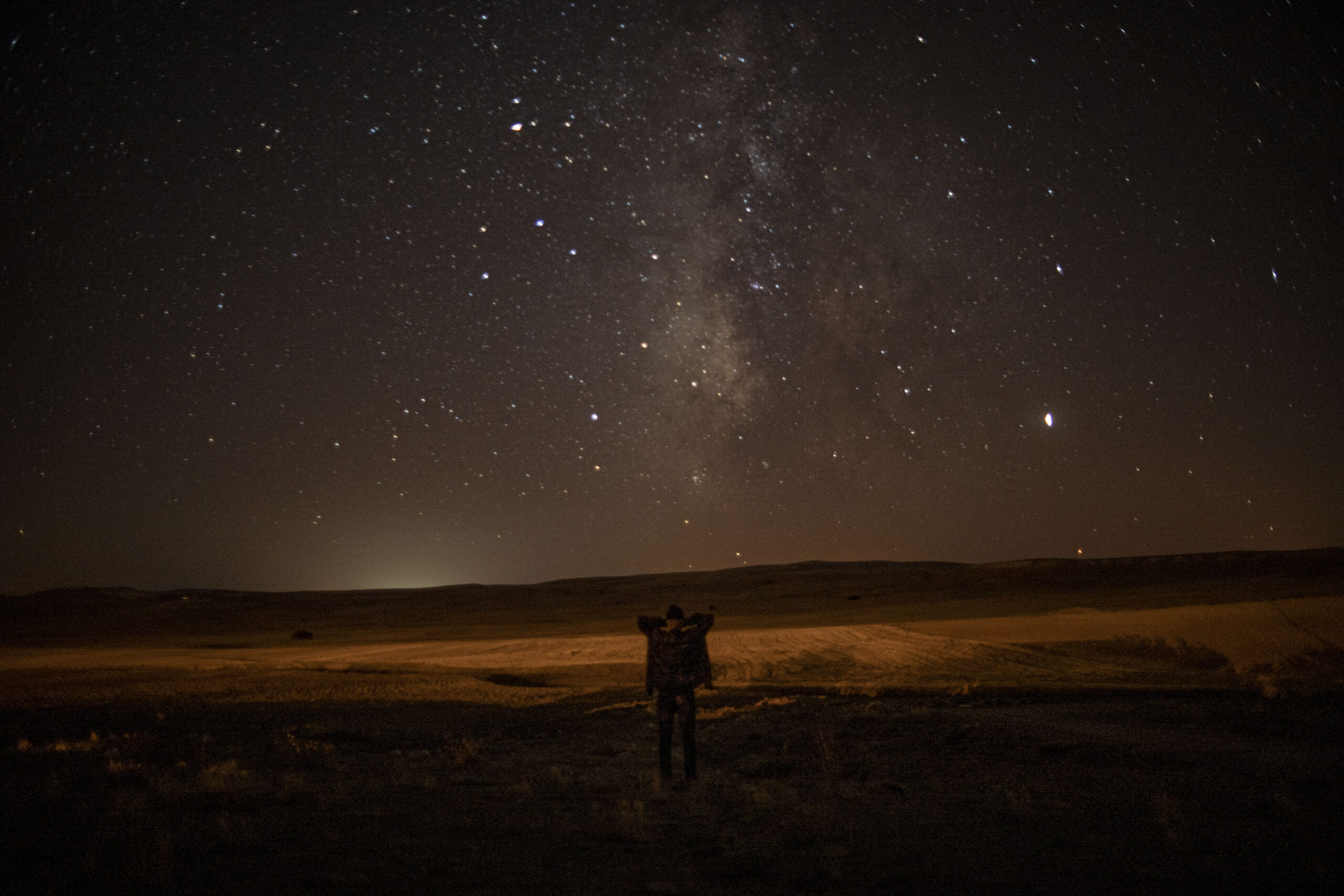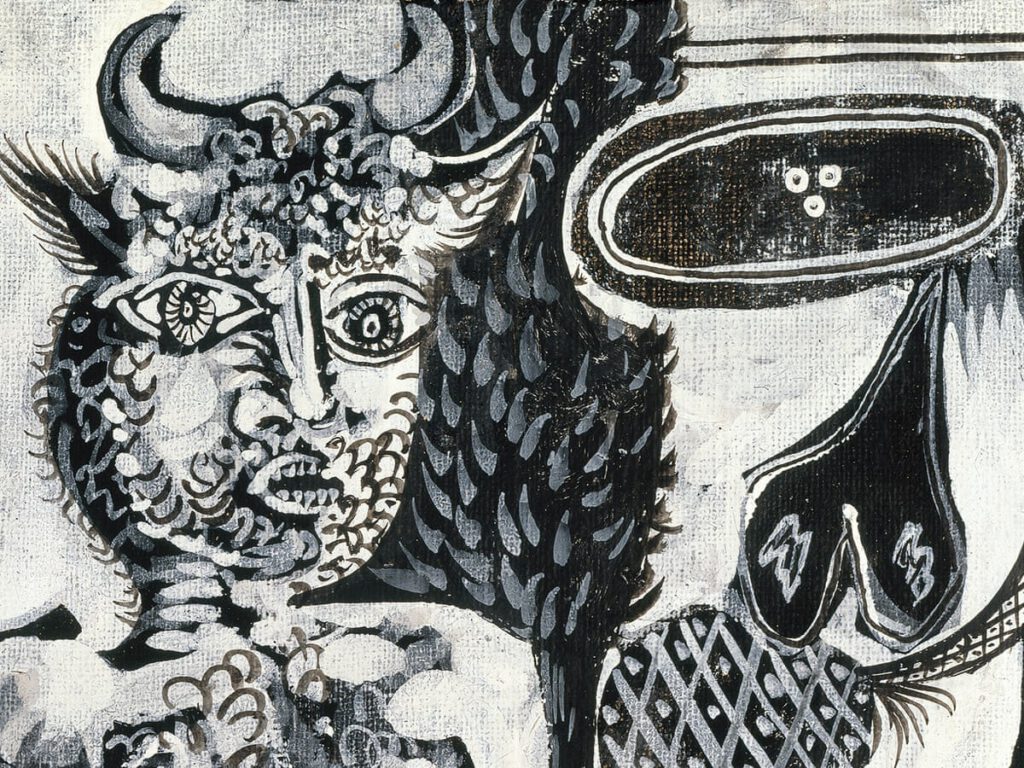
Asterion.
“…All parts of the house are repeated many times, any place is another place. There is no one pool,
courtyard, drinking trough, manger; the mangers, drinking troughs, courtyards pools
are fourteen (infinite) in number. The house is the same size as the world; or rather it is
the world.”
AND THE QUEEN gave birth to a child who was called Asterion.
I know they accuse me of arrogance, and perhaps misanthropy, and perhaps of madness. Such accusations (for which I shall exact punishment in due time) are derisory. It is true that I never leave my house, but it is also true that its doors (whose numbers are infinite) (footnote: The original says fourteen, but there is ample reason to infer that, as used by Asterion, this numeral stands for infinite.) are open day and night to men and to animals as well. Anyone may enter. He will find here no female pomp nor gallant court formality, but he will find quiet and solitude. And he will also find a house like no other on the face of this earth. (There are those who declare there is a similar one in Egypt, but they lie.) Even my detractors admit there is not one single piece of furniture in the house. Another ridiculous falsehood has it that I, Asterion, am a prisoner. Shall I repeat that there are no locked doors, shall I add that there are no locks? Besides, one afternoon I did step into the street; If I returned before night, I did so because of the fear that the faces of the common people inspired in me, faces as discolored and flat as the palm of one’s hand. the sun had already set ,but the helpless crying of a child and the rude supplications of the faithful told me I had been recognized. The people prayed, fled, prostrated themselves; some climbed onto the stylobate of the temple of the axes, others gathered stones. One of them, I believe, hid himself beneath the sea. Not for nothing was my mother a queen; I cannot be confused with the populace, though my modesty might so desire. The fact is that that I am unique. I am not interested in what one man may transmit to other men; like the philosopher I think that nothing is communicable by the art of writing. Bothersome and trivial details have no place in my spirit, which is prepared for all that is vast and grand; I have never retained the difference between one letter and another. A certain generous impatience has not permitted that I learn to read. Sometimes I deplore this, for the nights and days are long.
Of course, I am not without distractions. Like the ram about to charge, I run through the stone galleries until I fall dizzy to the floor. I crouch in the shadow of a pool or around a corner and pretend I am being followed. There are roofs from which I let myself fall until I am bloody. At any time I can pretend to be asleep, with my eyes closed and my breathing heavy. (Sometimes I really sleep, sometimes the color of day has changed when I open my eyes.) But of all the games, I prefer the one about the other Asterion. I pretend that he comes to visit me and that I show him my house. With great obeisance I say to him “Now we shall return to the first intersection” or “Now we shall come out into another courtyard” Or “I knew you would like the drain” or “Now you will see a pool that was filled with sand” or “You will soon see how the cellar branches out”. Sometimes I make a mistake and the two of us laugh heartily. Not only have I imagined these games, I have also meditated on the house. All parts of the house are repeated many times, any place is another place. There is no one pool, courtyard, drinking trough, manger; the mangers, drinking troughs, courtyards pools are fourteen (infinite) in number. The house is the same size as the world; or rather it is the world. However, by dint of exhausting the courtyards with pools and dusty gray stone galleries I have reached the streetand seen the temple of the Axes and the sea. I did not understand this until a night vision revealed to me that the seas and temples are also fourteen (infinite) in number. Everything is repeated many times, fourteen times, but two things in the world seem to be repeated only once: above, the intricate sun; below Asterion. Perhaps I have created the stars and the sun and this enormous house, but I no longer remember.
Every nine years nine men enter the house so that I may deliver them from evil. I hear their steps or their voices in the depths of the stone galleries and I run joyfully to find them. The ceremony lasts a few minutes. They fall one after another without my having to bloody my hands. They remain where they fell and their bodies help distinguish one gallery from another. I do not know who they are, but I know that one of them prophesied, at the moment of his death, that some day my redeemer would come. Since then my loneliness does not pain me, because I know my redeemer lives and he will finally rise above the dust. If my ear could capture all the sounds of the world, I should hear his steps. I hope he will take me to a place with fewer galleries fewer doors. What will my redeemer be like? I ask myself. Will he be a bull or a man? will he perhaps be a bull with the face of a man? or will he be like me? The morning sun reverberated from the bronze sword. There was no longer even a vestige of blood. “Would you believe it, Ariadne?” said Theseus
“The Minotaur scarcely defended himself.”

The Minotaur: A Reflection of Human Complexity from Myth to Modernity
In the mythic landscapes of ancient Greece, the Minotaur emerges as a paradox—a creature that embodies both the monstrosity and vulnerability inherent in the human condition. With the head of a bull and the body of a man, this figure is not merely a relic of myth but a profound symbol of the intricate interplay between civilization and savagery, reason and instinct. As we trace the Minotaur’s journey from the confines of the labyrinth to its reimagining in literature and art, we uncover a narrative that mirrors our own struggles with identity, morality, and the labyrinthine nature of existence.
Origins of the Minotaur: The Beast Within the Maze
The story of the Minotaur begins with a transgression. King Minos of Crete, failing to honor his vow to Poseidon, becomes the unwitting architect of his own doom. The god’s retribution comes in the form of the Minotaur, born from the unnatural union of Minos’ wife, Pasiphaë, and a divine bull. The Minotaur, a creature both feared and loathed, is confined within a labyrinth—an intricate prison that reflects the complexities and contradictions of its very existence.
The labyrinth itself, designed by the master craftsman Daedalus, symbolizes the convoluted paths of the human psyche, where the line between monster and man blurs. The Minotaur, condemned to wander these winding corridors, becomes a powerful metaphor for the darker aspects of human nature that we seek to contain and control but never fully understand.
Classical Depictions: The Civilized Hero and the Savage Beast
In the art of ancient Greece, the Minotaur is often portrayed at the moment of its defeat by Theseus. This depiction reinforces the narrative of civilization triumphing over barbarism, with Theseus representing the ideal of rational heroism. The Minotaur, in contrast, embodies the chaotic, untamed forces that lie just beneath the surface of society—forces that must be conquered to maintain order.
Yet, even in these classical representations, there is a tension between the Minotaur’s monstrous appearance and its tragic fate. The creature is not merely an antagonist to be vanquished but also a reflection of the fears and desires that drive human behavior. The myth invites us to question who the true monster is—the beast within the maze or the society that demands its sacrifice.
Renaissance and Baroque Reinterpretations: The Humanization of the Monster
As Western thought evolved during the Renaissance and Baroque periods, so too did the interpretation of the Minotaur. Artists and thinkers began to explore the duality of the creature, seeing in it a mirror of human complexity. The Minotaur became a symbol of the struggle between reason and passion, civilization and the primal instincts that underlie it.
In works like Dante’s Divine Comedy, the Minotaur is positioned as a guardian of the violent, a role that underscores its association with unchecked aggression. However, this depiction also suggests a deeper truth: that violence is not just a monstrous act but a fundamental part of the human experience. The labyrinth becomes a space where these dark truths are confronted and where the Minotaur, in all its tragic complexity, forces us to reckon with the consequences of our actions.
Modern Interpretations: The Minotaur as a Symbol of Existential Struggle
The 20th century brought a profound shift in how the Minotaur was understood. No longer simply a monster to be slain, the Minotaur became a symbol of the existential struggles that define modern life. Artists like Pablo Picasso reimagined the creature as a reflection of the fractured human psyche—a being torn between its desires and its fears, its power and its vulnerability.
In literature, the Minotaur was further humanized. Jorge Luis Borges’ short story “The House of Asterion” presents the creature not as a fearsome beast but as a solitary, introspective figure trapped within both the labyrinth and its own existential despair. Borges’ Asterion is a being who longs for connection but is doomed to isolation, a poignant metaphor for the human condition in a world that often feels like an endless maze of choices and consequences.
The Minotaur in Popular Culture: A Mirror for Our Times
Today, the Minotaur continues to captivate the imagination, appearing in various forms across popular culture. From literature to film, the creature is used to explore themes of identity, conflict, and the human struggle against the forces that seek to confine and define us. In modern retellings, the Minotaur is often a complex figure—a monster that is both feared and pitied, representing the challenges we face in confronting the unknown, both within ourselves and in the world around us.